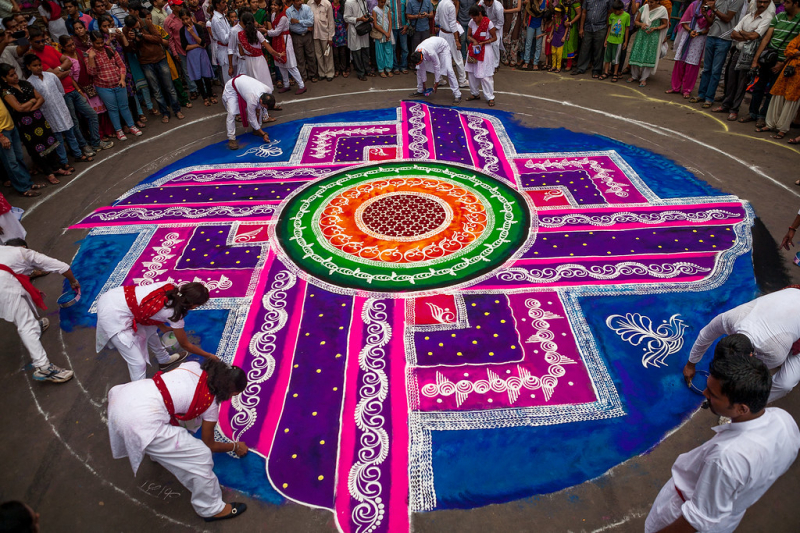Rangoli is ultilized in education

The art of Rangoli, deeply rooted in Indian culture, holds fascinating mathematical connections that have attracted mathematicians and educators. Reflection symmetry, also known as mirror symmetry, is evident in many Rangoli designs. Artists create a pattern on one side of an axis that is perfectly mirrored on the other side.
Translational symmetry is observed when Rangoli patterns can be shifted or translated along a particular direction to create a new identical pattern. This concept relates to the geometric concept of translation, allowing students to explore the idea of shifting shapes without altering their appearance.
Moreover, the use of intricate geometric shapes and patterns in Rangoli provides an excellent opportunity for students to learn about shapes, angles, and spatial relationships. Educators have used Rangoli as a practical and engaging way to teach mathematical concepts, making learning both enjoyable and visually stimulating.
Incorporating Rangoli into mathematical education not only deepens students' understanding of mathematical principles but also fosters an appreciation for the cultural and artistic significance of this ancient tradition. It showcases the profound ways in which art and mathematics intersect, highlighting the universal language that both disciplines share.










